- What are remontant raspberries?
- Benefits of growing remontant raspberries
- Extended Harvesting Season
- Higher Yields
- Easy Maintenance
- Space Efficiency
- Versatility in Culinary Uses
- Pruning
- When to prune
- Tools needed
- Steps to prune remontant raspberries
- After pruning
- Conclusion
- Why is pruning important for remontant raspberries?
- 1. Regulating growth
- 2. Managing size
- 3. Promoting air circulation
- 4. Maximizing fruit production
- When to prune remontant raspberries?
- Pruning in early spring:
- Pruning after the fall harvest:
- How to prune remontant raspberries?
- 1. Initial pruning after planting
- 2. Pruning in late winter/early spring
- 3. Pruning after the first harvest
- Shaping
- Why is shaping important for remontant raspberries?
- When to shape remontant raspberries?
- How to shape remontant raspberries?
- Question-answer:
- Can I prune and shape my remontant raspberries?
- When is the best time to prune remontant raspberries?
- How often should I prune and shape my remontant raspberries?
- What tools do I need for pruning remontant raspberries?
- What are the benefits of pruning and shaping remontant raspberries?
- Can I harvest raspberries twice a year by pruning and shaping?
- Video: How to Prune Raspberries for BIGGER Harvests!
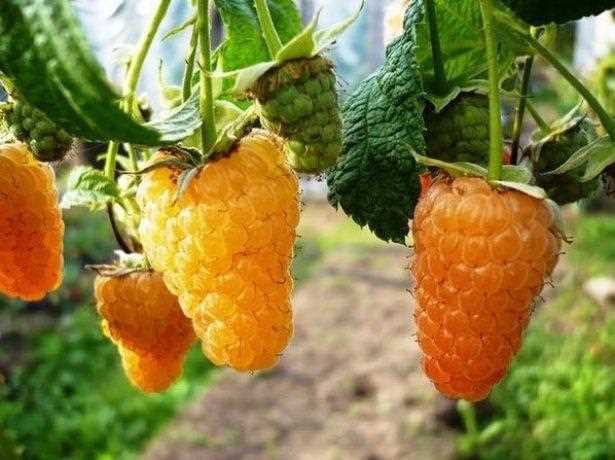
Raspberries are a delicious and nutritious addition to any garden, and with remontant raspberries, you can enjoy a bountiful harvest not once, but twice every year. Remontant raspberries, also known as everbearing raspberries, are a special variety that produces fruit in two separate flushes. To maximize their growth and harvest, proper pruning and shaping techniques are essential.
Pruning is an important practice for maintaining the health and productivity of your remontant raspberry plants. It involves removing dead, damaged, or weak canes, as well as thinning out overcrowded areas. By doing this, you allow air circulation and sunlight to reach all parts of the plant, reducing the risk of disease and promoting optimal fruit production.
When it comes to shaping your remontant raspberry plants, there are a few methods you can use. One common technique is the renewal method, where you remove all canes that have produced fruit in the current year. This encourages the plant to send out new shoots, resulting in a strong and productive crop for the following year. Another shaping method is the trellis system, which involves training the canes to grow along a support structure. This not only maximizes space but also makes it easier to harvest the fruit.
Remember to wear protective gloves and long sleeves when pruning and shaping your remontant raspberry plants, as their thorny canes can cause injury. Additionally, always use clean and sharp tools to make precise cuts and minimize damage to the plant.
By following these pruning and shaping techniques, you can ensure that your remontant raspberries stay healthy and productive, allowing you to enjoy a double harvest of these tasty berries every year. So grab your gardening tools and get ready to savor the sweet rewards of your labor!
What are remontant raspberries?
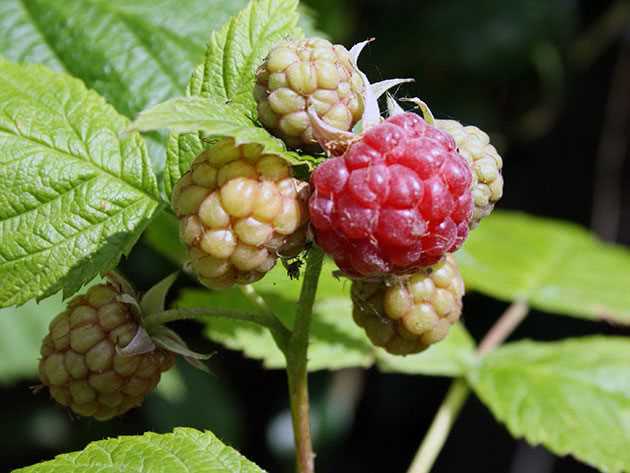

Remontant raspberries, also known as everbearing raspberries, are a type of raspberry cultivar that can produce two crops in a single year. Unlike traditional raspberries, which only bear fruit once a year, remontant raspberries can provide a fall harvest in addition to the traditional summer harvest.
One of the key characteristics of remontant raspberries is their ability to produce fruit on new growth. This means that even if the canes of the plant are damaged or pruned, new shoots will emerge and still bear fruit. This makes them a great choice for gardeners who want a consistent supply of raspberries throughout the year.
While remontant raspberries have a similar flavor and texture to traditional raspberries, they are often smaller in size. However, their unique ability to produce a second crop more than makes up for their diminutive size.
It’s important to note that while remontant raspberries can produce fruit in both summer and fall, they typically have a shorter fruiting period than traditional raspberries. This means that the harvest window for remontant raspberries is relatively narrow, with the first harvest typically occurring in late spring or early summer, and the second harvest in late summer or early fall.
Like other types of raspberries, remontant raspberries thrive in well-draining soil and full sun. They can be grown in containers or in the ground, and need regular pruning and shaping to maintain their productivity.
Overall, remontant raspberries are an excellent choice for gardeners who want to enjoy a double harvest of raspberries throughout the year. With proper care and maintenance, these plants can provide a bountiful supply of delicious fruit for your enjoyment.
Benefits of growing remontant raspberries
Growing remontant raspberries can offer a range of benefits for the home gardener. These versatile plants have several advantages over traditional raspberries, making them a popular choice among gardeners. Here are some of the key benefits of growing remontant raspberries:
Extended Harvesting Season
One of the main advantages of growing remontant raspberries is their extended harvesting season. While traditional raspberries only produce fruit once a year, remontant varieties can produce two crops every year. This means that you can enjoy fresh raspberries for a longer period of time, providing a more continuous supply of delicious fruit.
Higher Yields
Remontant raspberries typically have higher yields compared to traditional varieties. This can be attributed to their ability to produce two crops in a single year. With proper care and maintenance, remontant raspberries can provide a bountiful harvest, giving you more raspberries to enjoy or share with family and friends.
Easy Maintenance
Remontant raspberries are relatively easy to maintain compared to other fruits. They require regular pruning and shaping to encourage optimal growth and fruit production. However, their hardy nature makes them less susceptible to pests and diseases, reducing the need for extensive pesticide treatments. With proper care and attention, these plants can thrive with minimal effort.
Space Efficiency
Remontant raspberries can be grown in small spaces, making them ideal for home gardens or even containers. Their compact growth habit allows you to grow them in tight spots, such as balconies or small yards. By utilizing vertical growing techniques or trellises, you can maximize your growing space and enjoy a bountiful harvest, even in limited areas.
Versatility in Culinary Uses
Remontant raspberries are not only delicious for fresh eating but are also versatile in various culinary uses. You can use them in desserts like pies, tarts, and crumbles, or incorporate them into jams, jellies, and sauces. With their vibrant color and sweet-tart flavor, remontant raspberries can enhance the taste and visual appeal of a wide range of dishes.
In conclusion, growing remontant raspberries offers several benefits, including an extended harvesting season, higher yields, easy maintenance, space efficiency, and versatility in culinary uses. Whether you are a beginner or experienced gardener, these plants can be a valuable addition to your garden, providing a continuous supply of delicious raspberries for your enjoyment.
Pruning
Pruning is an essential step in maintaining the health and productivity of remontant raspberries. It involves the removal of dead, damaged, and diseased canes, as well as the shaping and thinning of the plant to encourage new growth and maximize fruit production.
When to prune
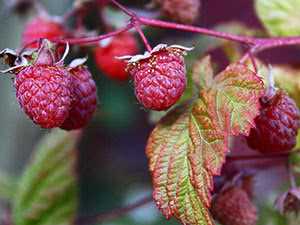

The best time to prune remontant raspberries is in early spring, before new growth begins. This allows the plant to focus its energy on producing new canes and fruit, rather than repairing damaged or diseased tissue.
Tools needed
- Pruning shears or a sharp pair of hand pruners
- Lopper or pruning saw for thicker canes
- Gloves to protect your hands
Steps to prune remontant raspberries
- Start by removing any dead or damaged canes at the base of the plant. These canes will not produce fruit and can harbor pests and diseases.
- Next, thin out the remaining canes by cutting back about two-thirds of the total canes. This will allow for better air circulation and light penetration, reducing the risk of fungal diseases.
- Trim the remaining canes to a height of about four feet. This encourages the plant to produce new lateral shoots, where the majority of the fruit will be borne.
- Remove any weak or spindly lateral shoots, as they are unlikely to produce much fruit.
- If your raspberries have already produced fruit in the fall, you can cut back the entire plant to about six inches above the ground to encourage vigorous new growth and a second harvest.
After pruning
After pruning, it is important to clean up any debris and dispose of it properly to prevent the spread of diseases. Applying a layer of mulch around the base of the plants can help conserve moisture, suppress weeds, and improve overall plant health.
Conclusion
Pruning is a crucial aspect of maintaining remontant raspberries. By following these pruning techniques, you can ensure a healthy and productive raspberry harvest not once, but twice, every year.
Why is pruning important for remontant raspberries?
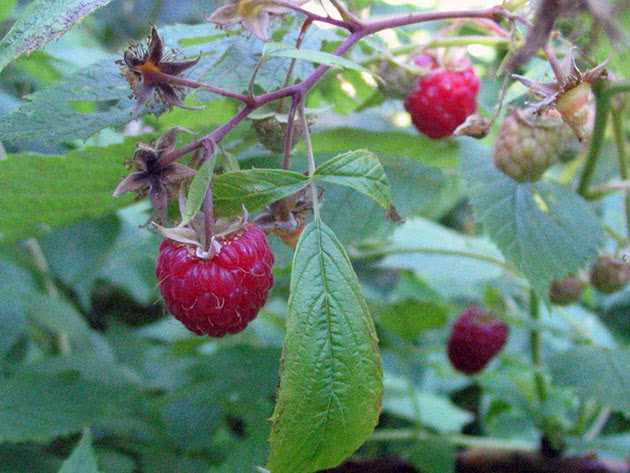

Pruning is a crucial step in the care and maintenance of remontant raspberries. It is essential for achieving healthy and productive plants. Pruning helps to regulate the growth of the plants, manage their size, promote better air circulation, and maximize fruit production.
1. Regulating growth
Pruning helps to control the growth of remontant raspberries by removing old and weak canes. This encourages the growth of new, healthy canes, which are more productive and capable of bearing a larger fruit crop. It also prevents overcrowding, allowing the remaining canes to have sufficient access to sunlight and nutrients.
2. Managing size
Remontant raspberries have a tendency to spread and become overgrown if left unpruned. Pruning allows you to manage the size and shape of the plants by removing excess canes and promoting bushier growth. This makes it easier to maintain and harvest the berries and prevents the plants from encroaching on nearby vegetation or structures.
3. Promoting air circulation
Proper air circulation is crucial for preventing the development of fungal diseases in remontant raspberries. Pruning helps to create a more open and airy structure for the plants, allowing better airflow through the canes and leaves. This reduces the humidity around the plants and minimizes the risk of diseases such as powdery mildew and gray mold.
4. Maximizing fruit production
Regular pruning of remontant raspberries is essential for maximizing fruit production. By removing old canes after they have finished fruiting and leaving the younger, more vigorous canes for the next season, you encourage the growth of new fruit-bearing canes. This ensures a bountiful harvest and prevents the energy of the plant from being wasted on old and unproductive canes.
In conclusion, pruning is an important practice for remontant raspberries as it helps to regulate growth, manage size, promote better air circulation, and maximize fruit production. By investing time and effort into proper pruning techniques, you can ensure the health and productivity of your remontant raspberry plants.
When to prune remontant raspberries?
Pruning remontant raspberries is an essential task that helps promote healthy growth and improve fruit production. The timing for pruning these raspberries differs depending on the specific variety and location. It’s important to understand when to prune remontant raspberries to ensure proper care and maintenance of the plants.
Remontant raspberries produce fruit twice a year, once in the early summer and again in the fall. To maximize fruit production and maintain healthy plants, it’s best to prune remontant raspberries at specific times.
Pruning in early spring:
- One of the best times to prune remontant raspberries is in early spring, before new growth begins. This is typically done in March or April, depending on the climate and location.
- Pruning in early spring allows for removal of any dead or damaged canes, as well as any weak or overcrowded canes. This helps improve air circulation and reduces the risk of disease.
- When pruning in early spring, it’s important to leave about 6-8 healthy canes per linear foot of row. This ensures a balance between fruit production and plant growth.
Pruning after the fall harvest:
- Another time to prune remontant raspberries is after the fall harvest, typically in late summer or early fall.
- After the fall harvest, it’s important to remove the canes that have produced fruit. These canes are referred to as “spent” canes and will not produce fruit again.
- Pruning after the fall harvest allows for better management of the plants and promotes healthier growth for the next year.
Overall, the timing for pruning remontant raspberries is crucial for maintaining healthy plants and maximizing fruit production. Pruning in early spring and after the fall harvest are key times to remove dead or crowded canes, promoting better air circulation and reducing the risk of disease. By following these pruning practices, you can enjoy two bountiful harvests of remontant raspberries each year.
How to prune remontant raspberries?
Pruning remontant raspberries is essential for maintaining a healthy and productive plant. By properly pruning your raspberries, you can ensure a bountiful harvest twice every year. Here are some steps to follow when pruning remontant raspberries:
1. Initial pruning after planting
After planting remontant raspberry plants, it is important to prune them back to encourage strong root development. Cut the canes to a height of 6-8 inches above the ground.
2. Pruning in late winter/early spring
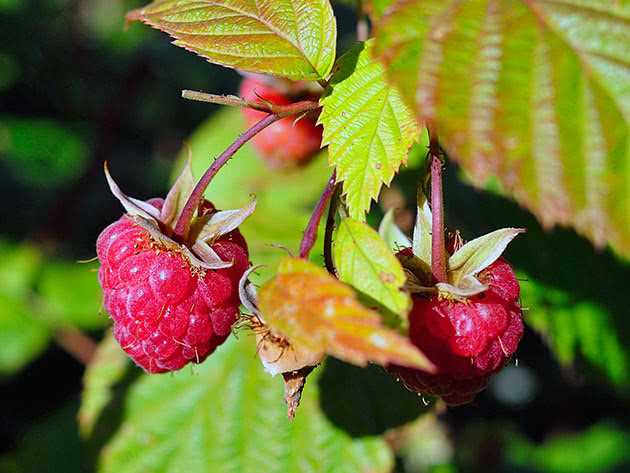

In late winter or early spring, prune your remontant raspberries to remove the old canes and allow new ones to grow. Follow these steps:
- Cut all the canes that have fruited the previous year down to the ground. These canes are usually darker in color and may appear dried or wilted.
- Identify the strongest and healthiest-looking canes and leave a maximum of 5-7 per plant.
- Prune the remaining canes to a height of about 4-5 feet. This will encourage lateral branching and promote better fruit production.
3. Pruning after the first harvest
After the first harvest in late summer or early fall, it is important to prune the canes to prepare for the second harvest. Follow these steps:
- Identify the canes that have fruited and cut them down to the ground. These canes will not produce fruit again.
- Identify the new canes that have grown during the year. These canes will produce fruit in the second harvest.
- Thin out the new canes by removing weaker or overcrowded canes, leaving a maximum of 5-7 per plant.
- Prune the remaining canes to a height of about 4-5 feet to encourage lateral branching and better fruit production.
Remember to always use sharp and clean pruning shears to avoid damaging the raspberry plant. Dispose of the pruned canes properly to minimize the chances of disease or pest infestation. Regular pruning will keep your remontant raspberries healthy, promote better airflow, and increase your harvest yield.
Shaping
To ensure that your remontant raspberries are growing in an orderly and productive manner, it is important to shape the plants. Shaping involves removing any unwanted or dead canes and training the remaining canes to grow in a desirable pattern.
1. Pruning Dead Canes: Dead canes are a common sight in raspberry plants, and they should be pruned to make way for new growth. These canes are usually dry, brittle, and brown in color. Using a pair of sharp pruning shears, cut the dead canes at the base, making sure not to damage any healthy canes nearby.
2. Removing Unwanted Canes: Raspberry plants tend to produce more canes than necessary. It is important to remove any excess canes to help maintain plant health and proper airflow. Look for canes that are too close to each other or canes that are growing in undesirable directions. Use pruning shears to cut these canes at the base.
3. Training Canes: Once the dead and unwanted canes have been removed, it is time to train the remaining canes. The goal is to create an open and spreading canopy that allows sunlight to reach all parts of the plant. Gently bend the canes and tie them to a support system, such as a trellis or a wire frame. This will help keep the canes upright and prevent them from drooping or collapsing under the weight of the raspberries.
4. Regular Maintenance: Shaping is an ongoing process and should be done regularly throughout the growing season. As new canes emerge, continue to prune dead canes and remove any unwanted ones. Monitor the growth of the canes and adjust the training as needed to maintain an orderly and productive raspberry patch.
By diligently shaping your remontant raspberry plants, you will not only promote their overall health and productivity but also ensure a more enjoyable and efficient harvesting experience.
Why is shaping important for remontant raspberries?
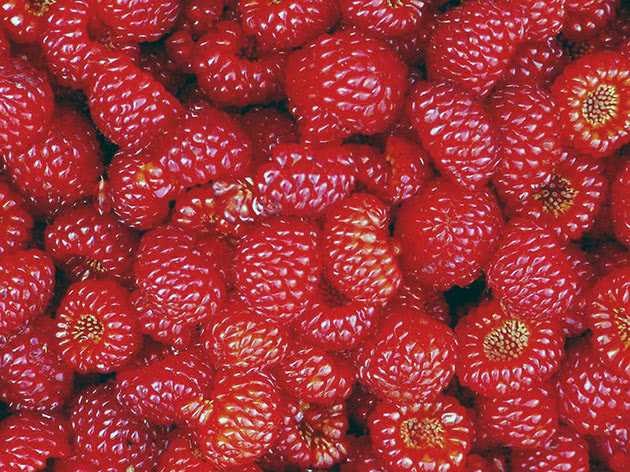

Shaping remontant raspberries is an essential practice for successful cultivation and harvesting. By shaping the raspberry plants, growers can optimize the plant’s growth, improve fruit production, and make the harvesting process more efficient. Here are some reasons why shaping is important for remontant raspberries:
- Improved airflow: Shaping the raspberry plants by removing excess canes and thinning out the growth allows for better airflow through the plants. Improved airflow reduces the chances of diseases and pests, as it helps to keep the plants dry and reduces humidity.
- Enhanced sunlight penetration: By shaping the raspberry plants, growers can ensure that sunlight reaches all parts of the plant. Sunlight is crucial for the plants’ photosynthesis process, which is essential for healthy growth and fruitful harvests. Shaping helps to prevent shade from neighboring plants and encourages the plants to receive maximum sunlight.
- Optimal fruit development: Shaping remontant raspberries helps in achieving better fruit quality and development. By removing overcrowded canes and maintaining a well-spaced plant structure, the fruits receive sufficient nutrients and sunlight, resulting in larger, juicier, and more flavorful berries.
- Easier harvesting: Shaping remontant raspberries makes the harvesting process more convenient. When the plants are properly shaped, the fruits are more accessible and visible, making it easier for growers to pick the berries without damaging other canes. Additionally, removing excess canes and keeping the plant organized minimizes the risk of thorns and prickling during harvest.
- Long-term plant health: Regular shaping of remontant raspberries promotes long-term plant health. By eliminating diseased or damaged canes, growers can prevent the spread of diseases and improve overall plant vigor. Shaping also encourages new growth and prevents the plants from becoming overcrowded, which can lead to poor airflow and increased susceptibility to pests and diseases.
In conclusion, shaping remontant raspberries is a vital practice for maximizing fruit production, ensuring plant health, and facilitating easier harvests. By investing time in shaping and maintaining the plants’ structure, growers can enjoy abundant and high-quality raspberries twice a year.
When to shape remontant raspberries?
Shaping remontant raspberries is an important process that helps to maintain the health and productivity of the plants. Proper shaping ensures that the plants grow in a manageable and structured manner, making it easier to harvest the fruit.
The ideal time to shape remontant raspberries is in the late winter or early spring, before the new growth begins. This is typically around February or March, depending on the climate and location.
Before you start shaping the raspberries, it is important to assess the overall condition of the plants. Look for any dead or damaged canes, as well as any suckers that have grown outside of the desired planting area.
To shape the remontant raspberries, begin by removing any dead or damaged canes at the base of the plant. Cut these canes down to the ground using a clean, sharp pair of pruning shears or secateurs. This will help improve airflow and prevent the spread of diseases.
Next, thin out the remaining canes by removing any weak or spindly growth. Aim to leave around 4-6 strong, healthy canes per plant, spacing them evenly around the base. This will ensure that each cane has enough room to grow and produce fruit.
Finally, take the time to tie the remaining canes to a support structure, such as a trellis or wire frame. This will help keep the plants upright and prevent them from sprawling over the ground, making it easier to harvest the fruit.
Regular shaping is important for remontant raspberries, as it helps to maintain their overall health and productivity. By shaping the plants in late winter or early spring, you can ensure that they grow in a structured and manageable manner, resulting in a bountiful harvest twice a year.
How to shape remontant raspberries?
Shaping remontant raspberries is an important aspect of their care and maintenance. By shaping the plants, you can help promote healthy growth and ensure a bountiful harvest twice every year. Here are some steps to follow when shaping remontant raspberries:
- Prune in early spring: Start by pruning your remontant raspberry plants in early spring, before new growth begins. Remove any dead, damaged, or diseased canes, as well as any weak or thin canes. This will allow the plant to focus its energy on producing new, healthy canes.
- Thin out the canes: Once the dead and weak canes have been removed, thin out the remaining canes to create space for new growth. Aim to have about 6-8 canes per plant, evenly spaced out. Thinning out the canes will improve air circulation and light penetration, which is important for disease prevention and overall plant health.
- Train the canes: As the new canes grow, it’s important to train them to grow in the desired direction. This can be done by tying the canes to a trellis or support system. By training the canes, you can prevent them from sprawling on the ground and ensure they receive adequate sunlight and air circulation.
- Pinch back the tips: To encourage branching and lateral growth, pinch back the tips of the canes when they reach a height of about 24-30 inches. This will help promote the development of more fruiting laterals and increase the overall yield of your raspberry plants.
- Monitor and adjust: Throughout the growing season, regularly monitor your remontant raspberries and make any necessary adjustments. If any canes become overcrowded or tangled, thin them out to maintain good airflow. Additionally, if any canes break or become damaged, prune them back to promote healthy growth.
By following these steps to shape your remontant raspberries, you can ensure that your plants are healthy, productive, and ready to provide you with a bountiful harvest twice every year.
Question-answer:
Can I prune and shape my remontant raspberries?
Yes, you can prune and shape your remontant raspberries to promote growth and improve yield.
When is the best time to prune remontant raspberries?
The best time to prune remontant raspberries is in early spring or late winter before new growth begins.
How often should I prune and shape my remontant raspberries?
You should prune and shape your remontant raspberries every year to maintain their shape and improve fruiting.
What tools do I need for pruning remontant raspberries?
You will need sharp pruning shears or loppers to prune remontant raspberries. Gloves are also recommended to protect your hands from thorns.
What are the benefits of pruning and shaping remontant raspberries?
Pruning and shaping remontant raspberries helps to remove old, dead or diseased canes, improves air circulation and sunlight penetration, and promotes new growth and higher yields.
Can I harvest raspberries twice a year by pruning and shaping?
Yes, by pruning and shaping your remontant raspberries, you can harvest twice a year. Once in summer and once in fall.







